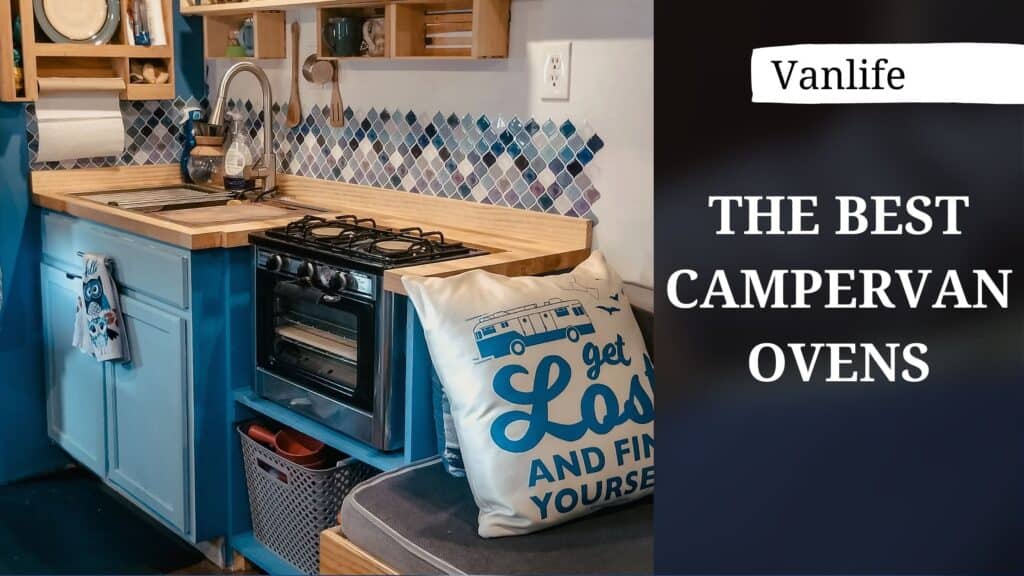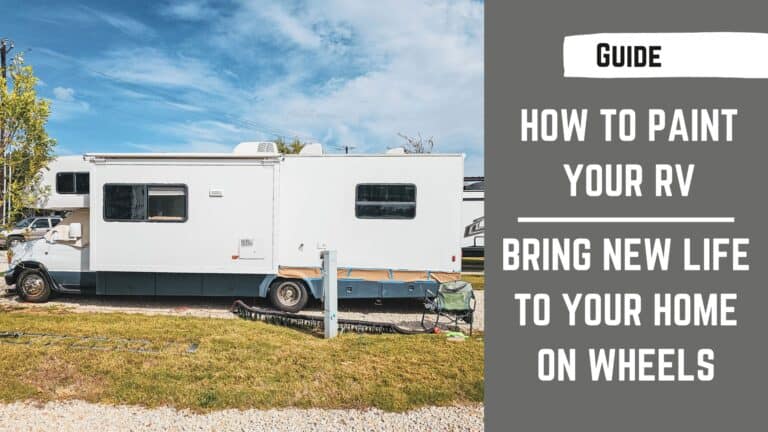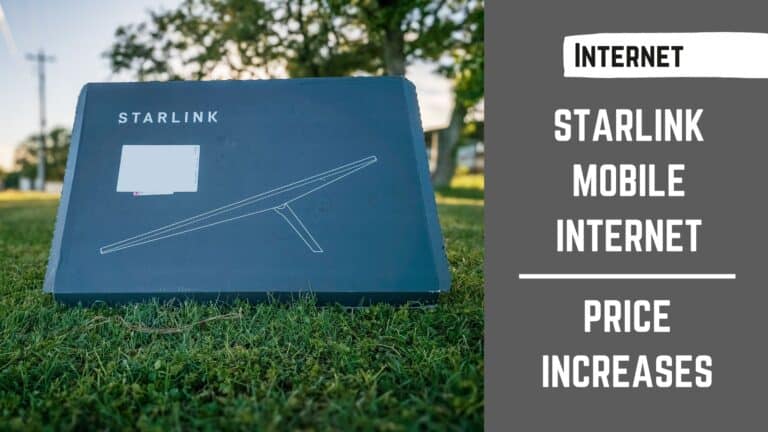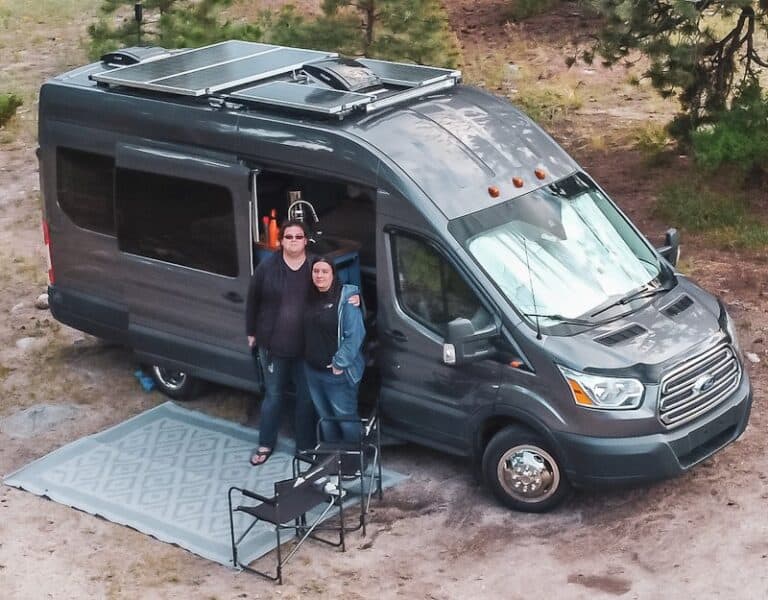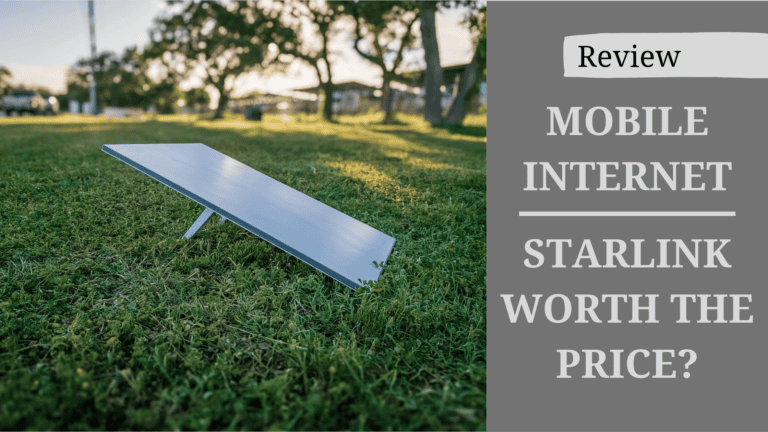Campervan ovens. Some people find them a must for their builds, while others choose not to have an oven in their campervan to save space. In our experience, we love having an oven in our campervan and find it a must as we enjoy being able to make homemade pizza and cookies wherever we may be camping.
Luckily, having a campervan oven doesn’t mean you need to set aside a large chunk of your kitchen where an oven would go. There are ways to bake right on your stovetop, and there are even portable campervan ovens that you can use outside.
Cast Iron (Skillet Or Dutch Oven)
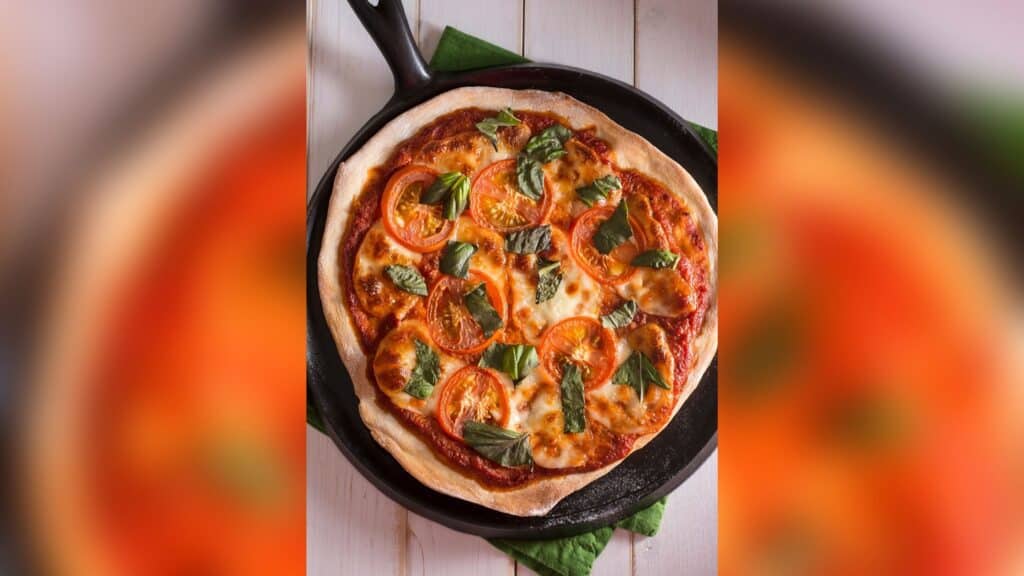
Cast iron is versatile. You can cook with it and bake with it. Cast iron pans are among the most versatile items you can have in your kitchen. Did you know you can use a cast iron pan on a stovetop as a small oven? Whether baking cookies, a casserole, or even a pizza, you can use your cast iron pan on your stovetop burner and get great results.
The secret to using a cast iron pan as a campervan oven is to heat the pan on your stovetop for 10 to 20 minutes to ensure it is entirely at temperature. Then, throw in your pizza dough and toppings and cover with a lid. It may take a few tries to get used to baking on a stovetop in a pan, so don’t be discouraged if the first attempt is not so great.
Our primary pan while traveling is an enameled cast iron skillet. It is by far the most versatile pan we have ever owned. We use it for every meal and bake in it with no issues. Enameled pans can be harder to keep safe in a van, but we find it worth it. The best part is that cast iron pans work on every type of stovetop, including induction tops. Not only will a cast iron pan work with whatever stovetop you have, but it does not take up anywhere near as much space as a larger campervan oven.
Dometic RV 3 Burner Campervan Oven
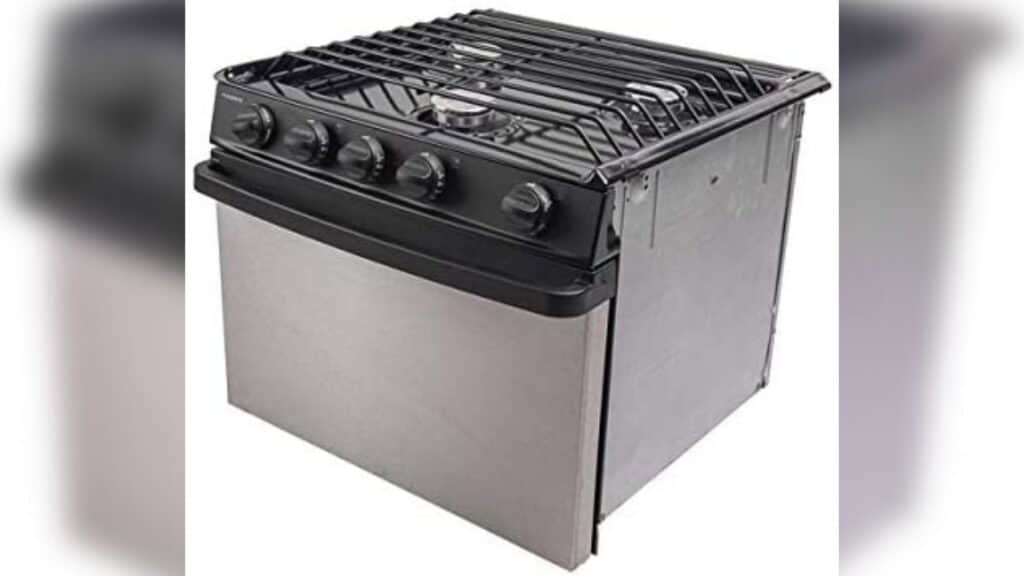
Dometic is a well-known and trusted name in the RV industry. If you plan to have propane appliances in your campervan, an RV 3 burner range might be an excellent campervan oven. Propane RV ranges typically have two oven sizes available from which you can choose. The only difference between a larger RV oven size and a smaller one is the height of the oven.
We recommend you follow the safety tips for installing an RV oven, as we will give later in this post about installing a Camp Chef oven. A propane detector and proper heat mitigation are necessary whenever working with an installed propane oven.
Camp Chef Portable Campervan Oven – Our Pick
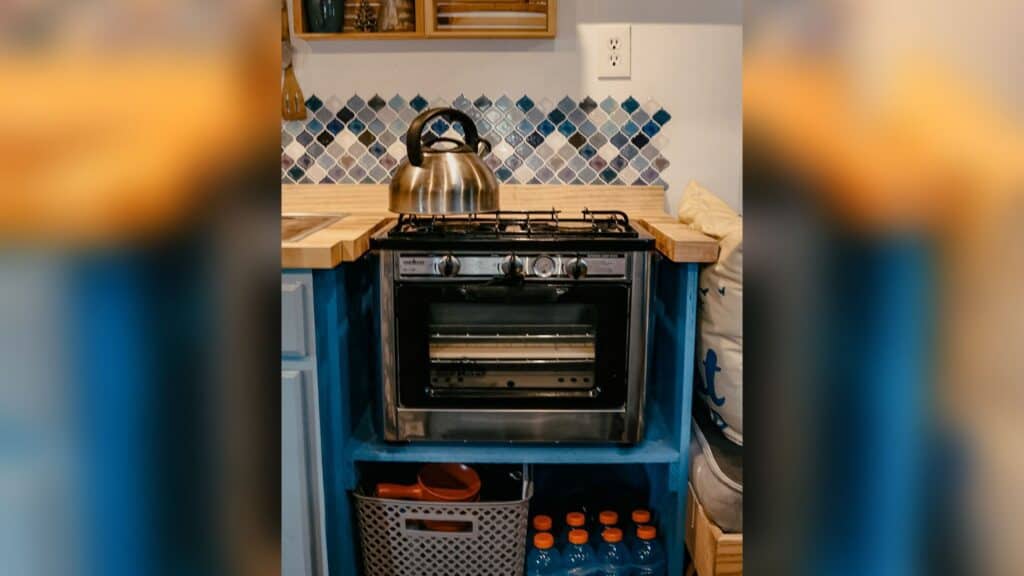
We have used the Camp Chef portable oven in two of our builds. The first time was in our 1971 Blue Bird bus conversion. We loved the camp chef so much that we now use it in our 2015 Ford Transit campervan. Why do we love the camp chef portable oven so much? We find it to be the perfect size, and with its two burners on top, it meets all of our cooking needs.
The Camp Chef portable oven uses a single 1lb portable bottle of propane that attaches to the rear of the range. Using disposable 1lb propane bottles is excellent if you do not want to have the hassle of running propane lines through your van or bus conversion. If you do not mind having a larger propane tank on board and having to run propane lines, you can easily attach a propane line to the oven instead of using a 1lb bottle.
We did not want to deal with running propane lines in our bus conversion. So we used a disposable 1lb bottle. Each bottle would last about five days of cooking all our meals with either the oven or the stovetop burner. Our 2015 Ford Transit van has our Camp Chef oven attached to a 10lb refillable bottle. The 10lb bottle lasts us about two months between fill-ups and only costs $10 to have refilled at a hardware store.
(Update 11/01/2024: This past year, we moved into a 2001 Class C RV and currently use a standard 3-burner RV oven and have loved it. We still stand by our belief that the camp chef oven is one of the best and easiest smaller campervan ovens on the market. That said, if you have the funds and the space for a full-sized 3-burner RV oven, the extra oven space and burner are pretty amazing.)
Honorable Mention: GO SUN Fusion Solar Campervan Oven

If you are looking for a campervan oven that is a bit more capable than baking in a pan but are not interested in having propane in your campervan, a solar cooker might be a good fit for your needs. Solar ovens such as the GO SSUN Fusion do not need propane or power to work. You just set them up in direct sunlight, and the built-in mirrors redirect the sunlight to a baking chamber.
Focused sunlight can heat the baking chamber to around 550°F, allowing you to bake anything that you would be able to bake in a standard oven. The GO SUN Fusion is one of the larger portable solar ovens on the market, making five servings at a time.
The best part about the GO SUN Fusion solar oven is that you can plug it into a 12v power source. So, if it is dark and rainy or you do not feel like cooking outside, you can still use the oven.
Why We Love The Camp Chef Campervan Oven
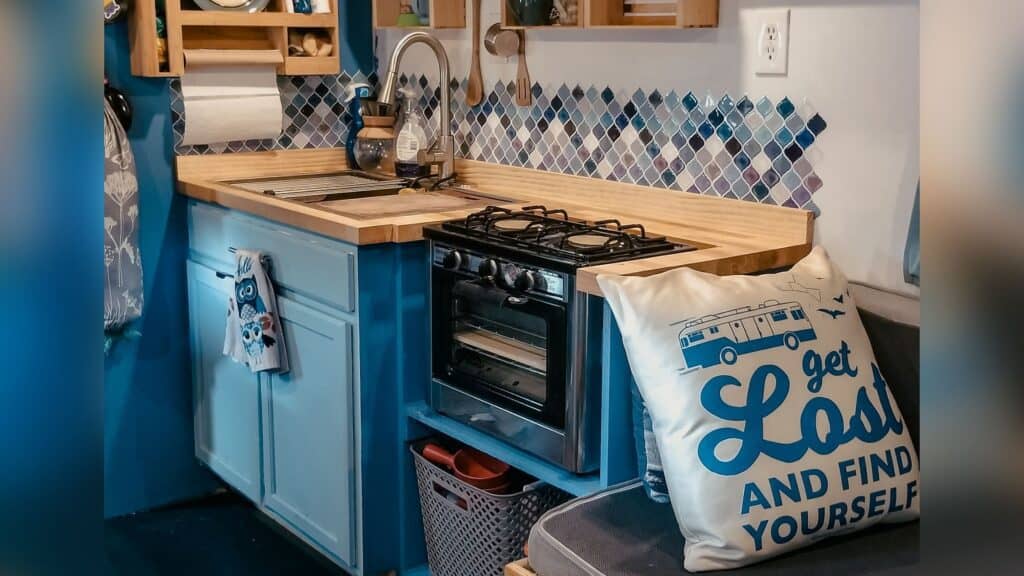
Not only does the Camp Chef oven have great flexibility with using either a 1lb or larger bottle of propane, but most importantly, we find it just works. We have zero complaints about either the two-burner stovetop or the oven. The stovetop burners have auto ignition, so there’s no need to use a lighter or a match to light the stove. The oven also has the same auto spark ignition.
While neither the stovetop nor the oven has excellent temperature control, with only a low and high setting, we have never found that an issue. Nothing we cook or bake needs a more medium setting, and if it is necessary, there is enough control in the knobs if you turn them slowly.
One of the main reasons we love the Camp Chef oven and have used it in both our bus conversion and our van build is that it is much cheaper than other options. At $325, it is a good deal for a full-feature two-burner stove with a built-in oven large enough to bake a pizza. If you can wait until a sale, getting a Camp Chef oven for around the $150 range is possible. This makes it the cheapest oven and stovetop combo for your campervan or bus conversion.
When using a Camp Chef oven in your campervan, the main thing to consider is that the stove was initially designed only for outdoor use. That does not mean you can’t use it inside; there are some steps you will need to take to ensure you install your Camp Chef oven safely.
How To Install A Camp Chef Oven In Your Campervan
The two main safety steps when using a Camp Chef portable oven inside your campervan are propane detection and mitigation of heat transfer.
Have A Propane Detector
Propane is the easiest part of using a Camp Chef oven in your campervan or bus conversion. We highly recommend having a hardwired propane detector in your campervan. While a battery-powered propane detector will work, there is a risk of the batteries dying and not having spares on hand to replace them. There is a smaller risk of having your detector offline with a hardwired propane detector wired into your campervan electrical system.
It is essential not to forget to test your propane detector. We like to test our detector every time we refill our onboard propane. We spray a can of compressed air that we hold upside down at our detector to test it. One short burst should be enough to set off the alarm.
Just having a hardwired propane detector is not enough. Heat mitigation is another part of using a portable oven inside your campervan. Heat mitigation is so necessary because you do not want any excess heat entering the wood surrounding the oven. The heat build-up will dry the surrounding wood and create a fire risk over time.
The propane detector we use:
- Hardwired Propane Detector
Heat Mitigation
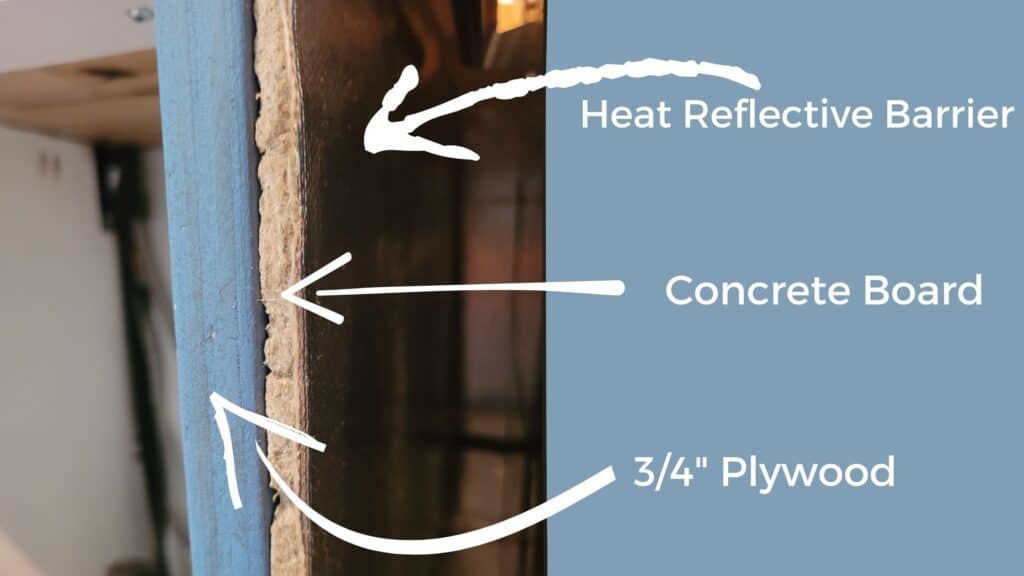
We recommend a two-step approach to heat mitigation. You want to prevent oven heat from affecting the surrounding wood, but you also want a fire barrier. That way, if any issues lead to a fire, flames will be contained and quickly extinguished.
We use a base layer of concrete board as a fire barrier, with a reflective heat barrier glued on top of it. This approach results in zero heat transfer to the surrounding wood, even after baking in our oven for over an hour.
Materials List:
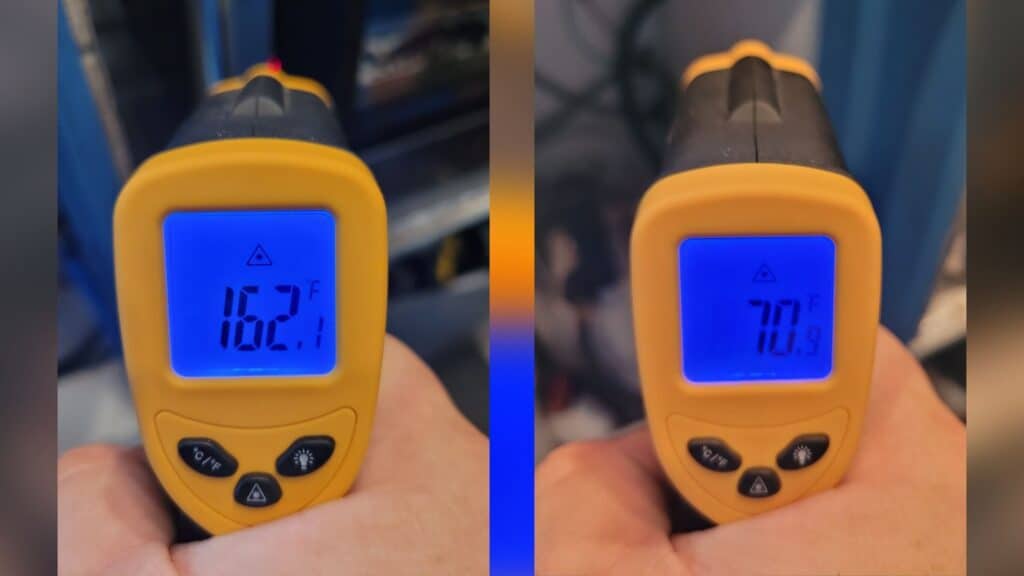
TL;DR
- You can bake right on your stovetop using a cast iron pan.
- Solar ovens are a great alternative to campervan ovens.
- You can install an RV oven in your van for a larger campervan oven.
- The Camp Chef portable oven is our favorite campervan oven. We have even used it in two builds now.
- Have a reliable propane detector near your stove when using a propane oven.
- Heat mitigation for built-in ovens is essential. Use a combination of concrete board and a reflective heat barrier.
